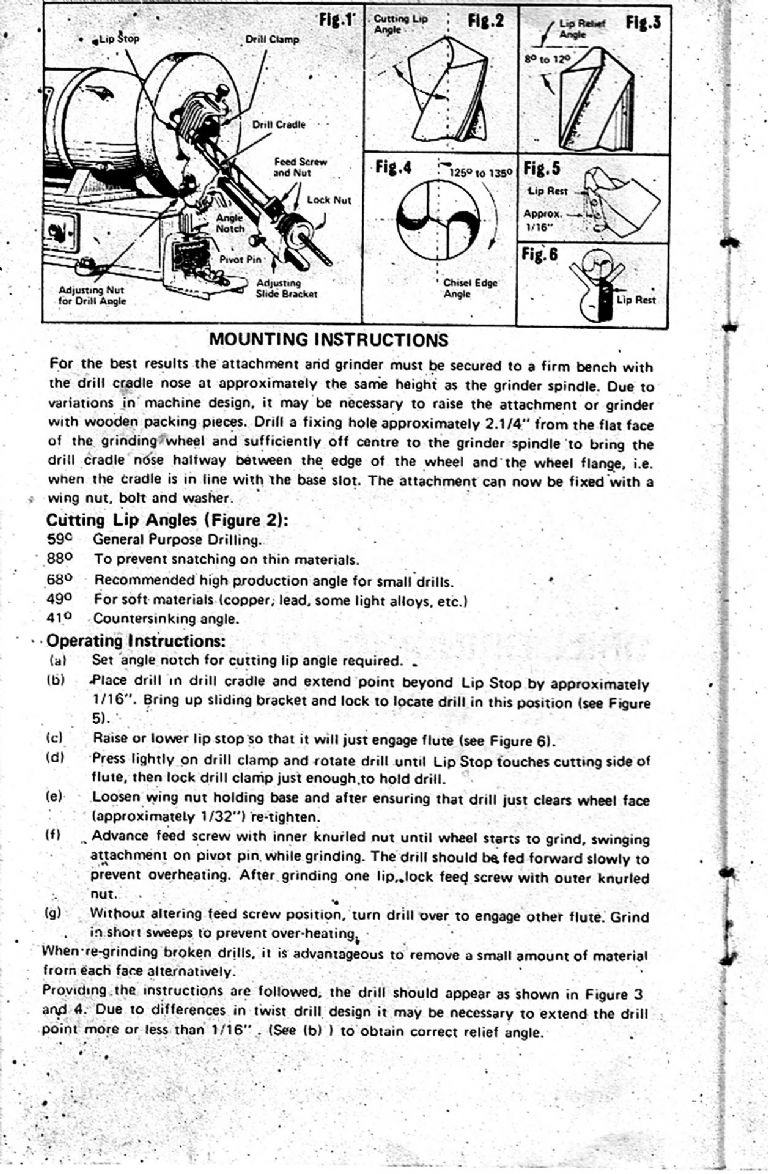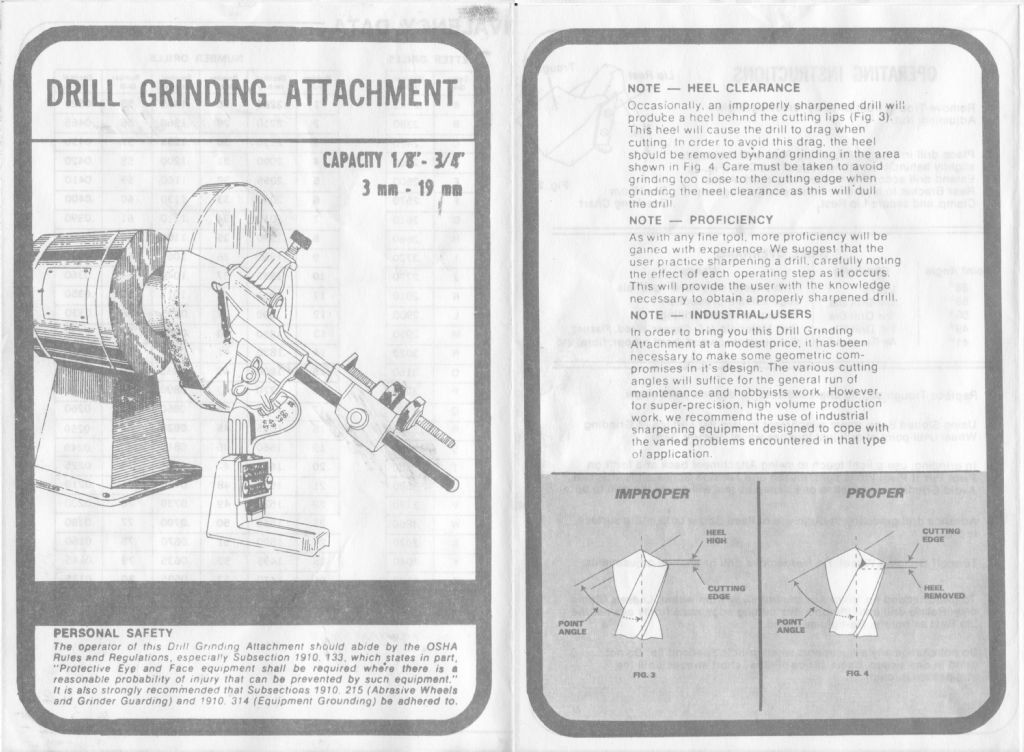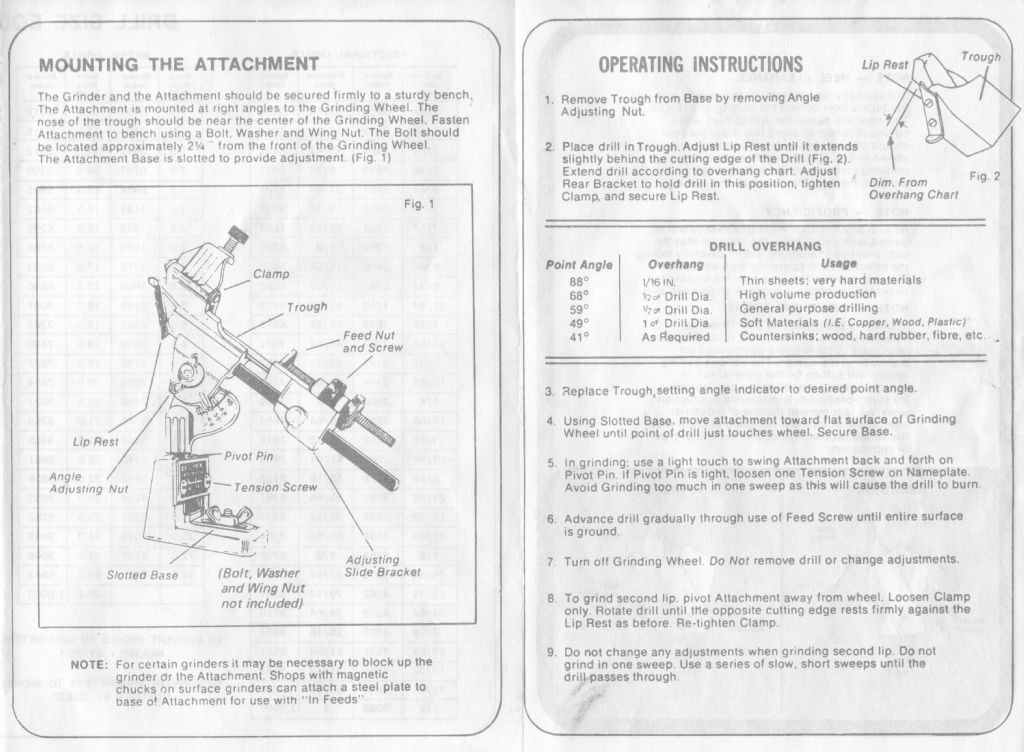Can I just say to all those people having trouble using these jigs, that I have never had any problem at all using mine. Ok, I know that sounds bigheaded: it isn’t meant to be, and I apologise for coming across like that. What I do, is to set the tool on the 59° mark, drop in the drill to be ground, set it up against the Lip Stop, which, by the way, I don’t seem to need to adjust all that much, and grind away. Rotate the drill once, or maybe thrice as necessary or if necessary, and Robert is my fathers brother! (Actually my son, but that’s another story.)
The point is that a nicely sharpened drill, even if it’s not perfect, is a lot easier to use than a blunt one, and, it’s possible to rescue broken ones provided they are not too broken. It’s true to say that a) I ruin more drills by chuck slip than by breakages/blunt; and b) I haven’t bought any large replacement drill bits for a long, long time. What I have done though, is to have one good set of imperial plus the remains of an imperial set, and a working set of metric and a good set of metric (which is what I mainly use). What this means is that I can sharpen at my leisure, or replace if too small to sharpen. It also means that I have good drills for use where better accuracy is required.
I use the side of a standard wheel. Ok, I know one didn’t ought to, but I do, and if you have a look at page 32 of Tubal Cain’s book, Drills, Taps And Dies (WSP12, you will find that Tubal Cain himself says it’s ok as the forces are, or should be, very light. Indeed, he finishes the sentence “and I can assure you that no harm will come”. He also says that the ideal is a cup wheel, but then points out that most grinders won’t accommodate one. So, as far as I am concerned, if Tubal Cain says it’s ok, then it’s ok by me.
Regards,
Peter G. Shaw
Marcus Bowman.






 I am now determined to get some use out of it…after all I did pay good money for it and being a Yorkshireman it pains me not to get good value for money at all times
I am now determined to get some use out of it…after all I did pay good money for it and being a Yorkshireman it pains me not to get good value for money at all times 


